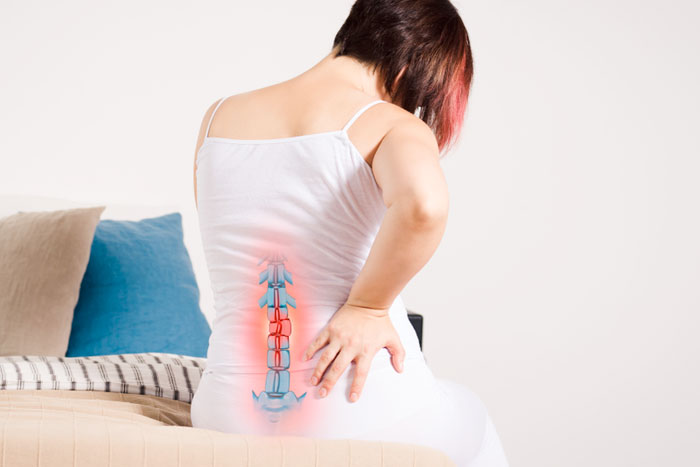When One Spine Bone Slips Over Another
Spondylolisthesis happens when a vertebra (spine bone) slips forward over the one below it. This shift can irritate nearby nerves and cause back pain, stiffness, or leg symptoms.
Why Spondylolisthesis Happens
The spine is built like a stack of blocks. When one block slips out of line, the whole structure can become unstable. This “slip” usually develops slowly over time but can also occur suddenly after injury.
Common Causes of Spondylolisthesis
There are different reasons a vertebra may shift forward, including:
- Degenerative changes: wear-and-tear weakening the joints and ligaments that hold the spine in place
- Stress fractures (spondylolysis): tiny cracks from repeated strain, often seen in athletes
- Congenital defects: some people are born with spinal structures that make slipping more likely
- Trauma: accidents or injuries disrupting stability
- Post-surgical changes: occasionally developing after spinal procedures
Symptoms That May Signal Spondylolisthesis
Not everyone with spondylolisthesis has symptoms, but when present they may include:
- Lower back pain that worsens with activity
- Stiffness or tightness in the back or legs
- Pain, tingling, or numbness in the legs (from nerve compression)
- Weakness or fatigue in the legs
- In severe cases, changes in posture or walking pattern
How Doctors Diagnose Spondylolisthesis
Because back pain has many causes, an accurate diagnosis is important. Evaluation may include:
- Physical examination: checking posture, flexibility, and nerve function
- X-rays: to confirm vertebral slippage
- MRI or CT scans: to assess nerves, discs, and degree of compression
Treatment Options for Spondylolisthesis
Treatment depends on how severe the slip is and how much it affects daily life:
- Lifestyle adjustments: posture correction, avoiding heavy lifting
- Physiotherapy: strengthening core and back muscles to stabilise the spine
- Medications: to manage pain and inflammation
- Injections: targeted relief for nerve-related pain
- Surgery: spinal fusion or decompression may be recommended if pain is severe or slippage is progressive
Living with Spondylolisthesis
Some people live comfortably with mild slippage, while others may need treatment if symptoms worsen. Building core strength, maintaining flexibility, and monitoring changes over time can help. Seeking timely medical advice ensures slippage doesn’t cause long-term nerve problems.
Book a Consultation for Back Pain or Suspected Slipped Vertebra
If you have persistent back or leg pain and suspect spondylolisthesis, schedule a consultation at Mash Spine & Orthopaedics for assessment and treatment planning.





